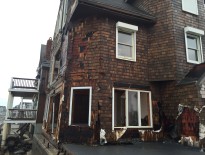While affordability remains better than long-term averages nationally, home prices at the lower end of the market are less affordable than the national average, particularly for those in lower income levels, according a report released today.
Black Knight Inc.’s Mortgage Monitor Report looks at the impact of interest rate rises on home affordability. The root of the issue has been the consistently higher-than-market-average rate of home price appreciation among properties in the lowest 20 percent of home prices nationally, Data and Analytics Executive Vice President Ben Graboske said in a statement.
“Prices on Tier 1 properties – those in the lowest 20 percent of home values – have been appreciating at a faster rate than all other tiers for 67 consecutive months,” Graboske said. “The annual rate of appreciation for these homes is 1.9 percent higher than the market average, and more than 3.6 percent higher than that of properties in the top 20 percent of prices (Tier 5). Larger overall increases in value among lower-priced homes is not just a recent trend, though; the same dynamic is observed when looking back over the past 15 years. While the nearly 50 percent increase in the median home price over that period has significantly outpaced the approximately 40 percent growth in the median income, lower interest rates today have more than offset that difference.”
“However, according to Census Bureau data, income growth in the lower quintiles has not kept up with the higher ends of the market. This has clear implications for home affordability in this segment of the population, even more so in light of the 43 BPS increase in interest rates seen in just the first six weeks of 2018.”
“Overall affordability remains better than long-term historical averages, even taking the recent rate jump into consideration. Currently, it takes 23 percent of the median income to purchase the median home nationally, which is still 1.9 percent below the averages seen from 1995-2003. But those in lower income levels are much closer – if not above – such long-term benchmarks. It seems evident that further affordability reductions from rising interest rates could put more pressure on lower-income buyers by increasing competition for lower priced homes, as borrowers’ overall buying power is diminished.”
The spike in 30-year fixed mortgage interest rates also had the effect of cutting the population of borrowers with interest rate incentive to refinance by nearly 40 percent in 40 days. Approximately 1.4 million borrowers lost the interest rate incentive to refinance in just the first six weeks of 2018. This leaves 2.65 million potential candidates who could still both benefit from and likely qualify for a refinance at today’s rates, the smallest that population has been since late 2008, prior to the initial decline in rates during the recession. This represents another challenge to a consistently shrinking refinance market. Refinance lending declined significantly in 2017, with the total number of originations down 29 percent, and total volume down by $355 billion, a 34 percent year-over-year decline.





